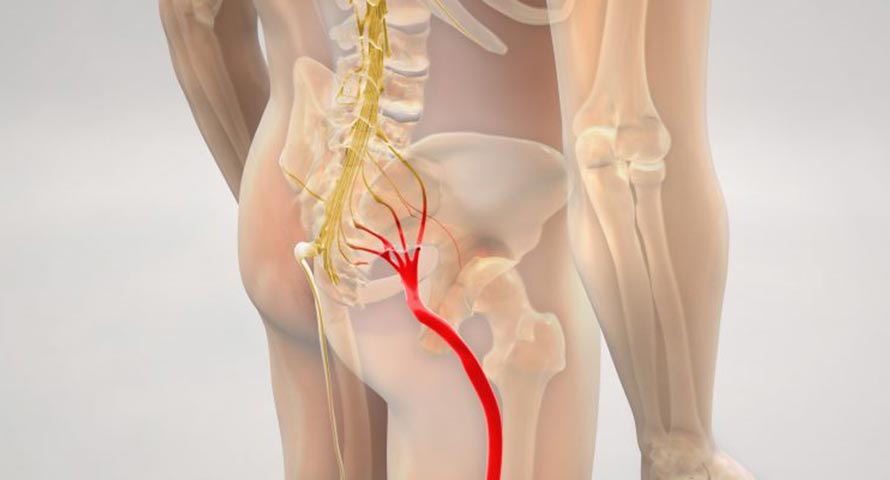By Bruno, Therapist at Bruno Physical Rehabilitation

Introduction
Sciatic pain, often referred to as sciatica, is a debilitating condition caused by compression or irritation of the sciatic nerve. Symptoms include radiating pain down the leg, numbness, tingling, or muscle weakness, typically originating from lumbar disc herniation, spinal stenosis, or piriformis syndrome.
A multimodal approach is often the most effective strategy, combining manual therapy, neuromuscular stimulation, ultrasound, kinesiotherapy, and laser therapy. At Bruno Physical Rehabilitation, our goal is to restore mobility, reduce inflammation, and provide long-lasting relief through personalised, non-invasive care.
1. Kinesiotherapy: Restoring Functional Movement and Strength
Kinesiotherapy plays a central role in sciatica rehabilitation by improving posture, reducing muscular compensation, and enhancing lumbar-pelvic control.
- Clinical Rationale: Motor control exercises have been shown to reduce pain and disability in patients with chronic low back pain and sciatica.
- Key Focus Areas:
- Core stabilisation and pelvic alignment
- Piriformis and hamstring stretching
- Neuromuscular re-education of lumbar stabilisers
Reference:
Panjabi MM. The stabilizing system of the spine. Part I. Function, dysfunction, adaptation, and enhancement. J Spinal Disord. 1992;5(4):383–9.
2. Microcurrent Therapy (MENS): Cellular Regeneration
MENS uses ultra-low electrical currents to promote tissue healing, reduce inflammation, and support nerve recovery without discomfort.
- Mechanism of Action: Increases ATP synthesis by up to 500%, enhances protein synthesis, and supports nerve regeneration.
- Application: Localised treatment along the lumbar spine and gluteal region to reduce neural inflammation and support tissue healing.
Reference:
Cheng N et al. The effects of electric currents on ATP generation, protein synthesis, and membrane transport in rat skin. Clin Orthop Relat Res. 1982;171:264–72.
3. Electrical Muscle Stimulation (EMS – Aussie & Russian Currents): Neuromuscular Recovery
EMS is used to strengthen weakened muscles, correct compensatory patterns, and relieve muscle spasms.
- Aussie Current (1 kHz & 4 kHz):
Highly comfortable stimulation, ideal for deep tissue activation and pain modulation. - Russian Stimulation (2.5 kHz):
Strong muscular contractions aimed at rebuilding strength and reducing disuse atrophy, especially post-sciatica immobilisation.
Recommended Use:
- Gluteus medius and maximus
- Hamstrings and paraspinal muscles
Reference:
Ward AR. Electrical stimulation using medium-frequency alternating current. Phys Ther. 2009;89(2):181–190.
4. Therapeutic Ultrasound (1 MHz & 3 MHz): Pain and Tissue Healing
Ultrasound therapy accelerates the healing of soft tissues and alleviates deep muscular tension.
- 1 MHz Frequency: Deep penetration (up to 5 cm), suitable for piriformis, gluteus minimus, and deep sciatic structures.
- 3 MHz Frequency: Superficial tissues such as the lumbar fascia and sacral ligaments.
Effects:
- Increases local circulation
- Reduces inflammation
- Improves soft tissue extensibility
Reference:
Robertson VJ, Baker KG. A review of therapeutic ultrasound: effectiveness studies. Phys Ther. 2001;81(7):1339–1350.
5. Class 4 MLS Laser Therapy: Inflammation and Nerve Pain Relief
Laser therapy promotes healing and modulates pain via photobiomodulation.
- Mechanism: Increases mitochondrial activity, reduces pro-inflammatory cytokines, and enhances microcirculation.
- Target Areas: Lumbar paraspinals, gluteal region, and sciatic path (posterior thigh)
Clinical Evidence:
High-intensity laser therapy significantly reduced pain and improved function in patients with lumbosciatic syndrome in a randomised controlled trial.
Reference:
Alayat MSM et al. High-intensity laser therapy versus pulsed electromagnetic field in the treatment of patients with chronic lumbosacral radiculopathy. Photomed Laser Surg. 2014;32(12):663–668.
https://pubmed.ncbi.nlm.nih.gov/25405700
6. Postural Re-education & Injury Prevention
Using movement screenings, we assess and correct daily habits and posture that contribute to recurrent sciatic pain.
- Techniques Used:
- Ergonomic education
- Functional mobility drills
- Movement retraining
Result: Reduced recurrence, improved quality of life, and return to daily activity.
Case Study Example
Patient: 62-year-old male with chronic sciatica following lumbar disc herniation
Treatment Plan (6 weeks):
- 3 sessions per week
- Kinesiotherapy + EMS (Aussie current)
- Ultrasound (1 MHz) on piriformis and lumbar area
- Laser
- MENS on sacral nerve path
Results: - 70% reduction in pain
- Improved gait and sitting tolerance
- No medication required after 4 weeks
Conclusion
Sciatica requires a precise, integrative approach. At Bruno Physical Rehabilitation, we personalise treatment plans using the most advanced and evidence-based therapies. By combining kinesiotherapy, MENS, EMS, ultrasound, laser, and education, we address both the symptoms and root causes of sciatic nerve pain.
This holistic and non-invasive strategy allows clients of all ages to recover mobility, reduce pain, and return to the life they love — confidently and safely.
📍 Book a Consultation
If you or a loved one is struggling with sciatic pain, we invite you to book a personalised consultation. Let’s build your path to recovery together.


